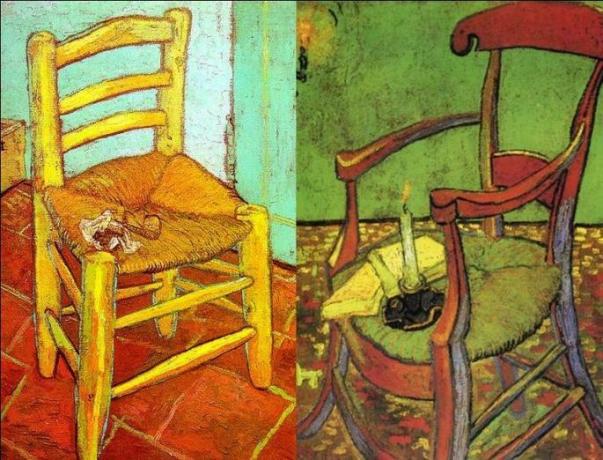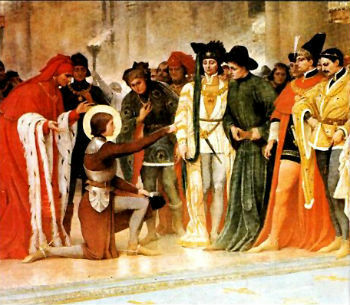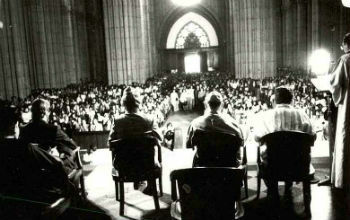THE Empress D. Leopoldine, born Archduchess of Austria, Princess of Hungary and Bohemia (etc.), she was the first wife of Dom Pedro I and one of the builders of the country's independence.
For her marriage to D. Pedro, was the first empress of Brazil and, for two months, queen of Portugal.
Passionate about nature, she brought to Brazil several Austrian scientists who studied the Brazilian fauna and flora.
She had seven children with D. Pedro I and two of them were sovereign: Dona Maria II, Queen of Portugal and Dom Pedro II, Emperor of Brazil.
birth, name and childhood
Carolina Josefa Leopoldina of Habsburg-Lorraine was born on January 22, 1797. She was the third daughter of the Emperor of Austria, Francis I, and his second wife, Princess Maria Teresa Carolina of Naples and Sicily.
In Brazil, she started to sign herself as “Maria Leopoldina”, as it is a tradition of the Portuguese royal family to include “Maria” among the names of the infantas. She is also known in our history as “Empress Leopoldina”, “Dona Leopoldina” or “Dona Maria Leopoldina” and “Maria Leopoldina of Austria”.
Carefully educated at the Viennese court, she early showed an interest in botany and mineralogy. On excursions taken with his family, he took the opportunity to collect samples of minerals and plants.
She also studied languages, history and painting leaving several watercolors.
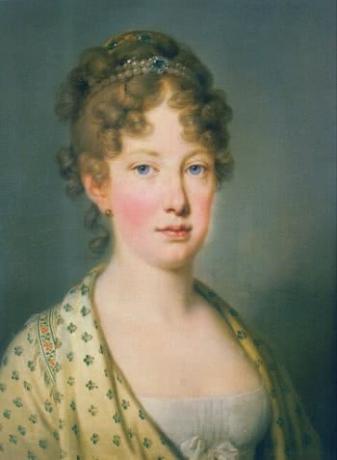
Dona Leopoldina portrayed by the Austrian painter Joseph Kreutzinger
Historical context
We must understand marriages between European courts as political alliances. Therefore, women were destined to be the bridge between nations and guarantee peace.
Dona Leopoldina's childhood was marked by the rise of Napoleon Bonaparte, who would expand the French Empire across Europe.
In order to bring the two Empires together, the Austrian Emperor offered Napoleon the hand of his eldest daughter, Maria Luisa. At Bonaparte's demand, Emperor François had to renounce the title of Roman-Germanic Emperor and become only the Emperor of Austria.
Maria Luísa's marriage was seen as a "necessary evil" to guarantee the country's territorial integrity.
Wedding of d. Leopoldina and Dom Pedro
In 1815, when Napoleon Bonaparte was finally defeated, European nations gathered at the Congress of Vienna to redraw the European map.
The Marquis de Marialva, Portuguese ambassador in Paris, was appointed to ask for reparations and indemnities from the French. Furthermore, it had been commissioned by Dom João VI to find a wife for the Crown Prince, D. Peter.
The choice fell on the Austrian Empire and the marriage was performed by proxy on May 13, 1817, in Vienna.
Dona Leopoldina leaves for Brazil on a trip that lasts five months. In her entourage, she was accompanied by Austrian scientists and artists who would study and portray Brazilian nature. Among the scholars were Carl von Martius, Johann von Spix, and Johann Natterer.
The young princess would only meet her husband in person when she lands in Rio de Janeiro, on November 5 of the same year. The next day, the couple received the nuptial blessing at the Church of Nossa Senhora do Carmo.
Children of d. Leopoldina and Dom Pedro
The marriage between D. Pedro and Dona Leopoldina fathered seven children, four of whom reached adulthood:
Mary II (1819-1853): with the abdication of Dom Pedro I to the Portuguese throne, she was Queen of Portugal from 1826 to 1828 and from 1834 to 1853.
Januária do Brasil (1822-1901): was heiress of Dom Pedro II until he had descendants. She married Luís, Count of Aquila, brother of Empress Tereza Cristina.
Francisca de Bragança (1824-1898): married Prince Francisco Fernando and with him went to France. The princess would be responsible for the marriage of her nieces Isabel and Leopoldina, with princes Gastón de Orleans, count d'Eu and prince Luís Augusto de Saxe-Coburgo-Gota, respectively.
Pedro II (1825-1891): heir to the Brazilian throne and emperor at 14 years of age.
The couple's other children were: Miguel, João Carlos and Paula.
Participation in the Independence of Brazil
With the departure of D. João VI to Portugal, in 1820, due to Porto Liberal Revolution, D. Pedro was appointed Prince Regent of Brazil.
More and more groups emerged that wanted the separation between the two territories. From Dona Leopoldina's letters, one could see that she was identified with the independence cause.
In the year 1822, some provinces, such as São Paulo, threatened to go to war against the Prince Regent. D. Pedro travels to ensure the support of Paulistas for his cause. Then, Dona Leopoldina assumes the interim regency.
At this moment a letter arrives from Portugal demanding that D. Peter immediately return to the Kingdom. Dona Leopoldina, at the request of José Bonifácio, summons the Council of State. During the meeting, they understand that this attitude is a maneuver for Brazil to lose its status as a United Kingdom and return to its colony status.
Thus, he signed the decree of independence for Brazil on September 2, 1822. Then, together with José Bonifácio, sends a letter to D. Pedro, declaring that it was time to break with Portugal.
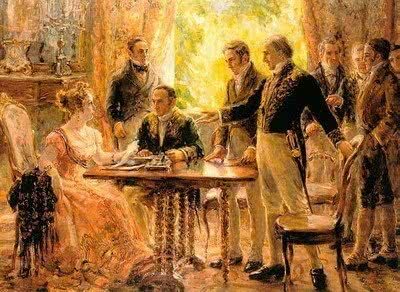
Dona Leopoldina presides over the session that would give Brazil independence. Author: Georgina de Albuquerque. Session of the Council of State. [s.d]. National Historical Museum, Rio de Janeiro.
married life
At first the spouses lived in harmony. Over time, the infidelities of D. Peter became more and more evident.
The last straw, however, was the relationship between D. Pedro I and Domitila de Castro, nominated Marquesa de Santos. Far from hiding it, D. Pedro I installed his lover's entire family near the official residence, the Palace of São Cristóvão.
The successive pregnancies and the grief caused by this situation would have worsened the health of Empress Leopoldina.
The death of the Empress, on December 11, 1826, caused a huge popular commotion and her burial was followed by thousands.
Curiosities about the empress Leopoldina
- The first flag of independent Brazil was designed by the painter Jean-Baptiste Debret who makes a tribute to the sovereigns: green represents the colors of the Bragança family and yellow, the Hapsburg.
- The city of São Leopoldo-RS, founded in 1824, was named after Dona Leopoldina.
- The Leopoldina Railroad, inaugurated in 1874, was named in her honor.
- The Imperatriz Leopoldinense samba school in Rio de Janeiro also pays tribute to him.
See too: Extraordinary Women Who Made History

